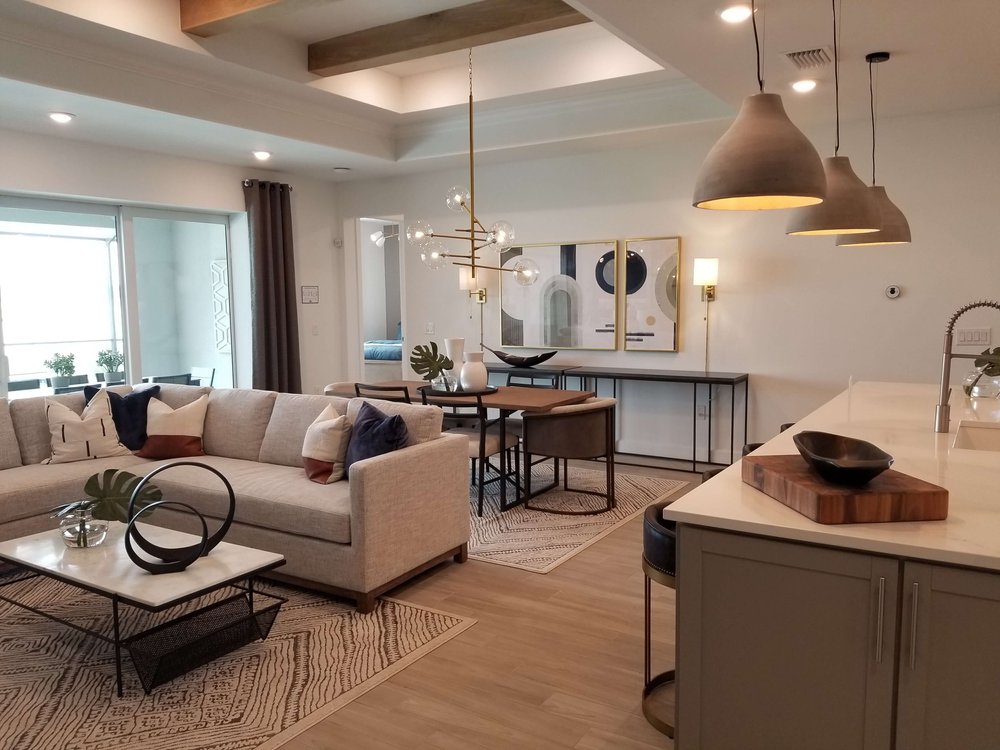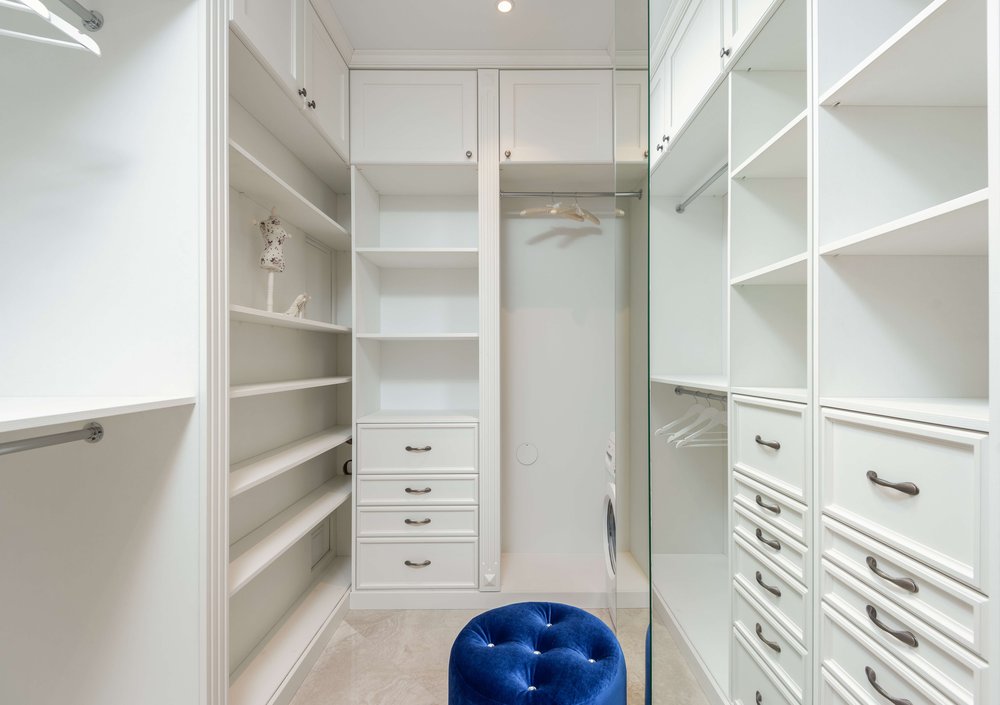The design of a family home should provide many years of flexible, practical use. It needs to accommodate different ages and changing ideas. Your family may consist of more babies than adults, to begin with, but over time, your home will become full of grown-up people who have their own ideas about how they want to live. A sympathetic design enables the modern family home to adapt to any unexpected arrangements the future may hold.
Open-Plan Layout
The contemporary trend for an open-plan living room and the kitchen has many benefits for family life. It provides a large communal space where you can all socialize. When preparing meals, you can still join in the conversations and keep watch on your toddlers as they play.
An open-plan living area usually works best with floor-to-ceiling windows that lead onto a patio. In summer, it's a convenient arrangement for outdoor barbecues. It's also ideal for easy access when carrying out household chores without feeling that you're isolated from the rest of the family. The spacious windows of an open-plan design are perfect for providing a clear view of your children playing in the backyard.
Adapting For Privacy

Photo by Christopher Moon
Every family home should be flexible regarding privacy. A perfect solution in an open-plan layout is to install sliding or folding doors to divide it into two. You can create a temporary lounge whenever you need to be peaceful. An alternative is a free-standing screen that can create an impromptu barrier around a desk or workspace.
Privacy becomes an important factor as your children grow to maturity. A study by Pew Research Center revealed that 52% of adults up to the age of twenty-nine still live in the family home. In north-eastern states, the figure rises to 57%. Your children could even follow the 17.8% of the population who are still living with their parents at the age of thirty-four.
Bedrooms For Any Age Group
Designing a home where families can grow together for four decades or more needs to plan ahead. Bedrooms become increasingly important as children grow up. Their own space is important as a retreat, a study center, and a place to express their own individuality.
If you're lucky enough to provide a bedroom per child, it is relatively easy. However, if two children are destined to share a bedroom into their teenage years and beyond, you need a flexible design. When they are older, you could allocate them a larger room. If it has two windows, it's ideal for partitioning into two. What Should Building Product Manufacturers Know About PAT Files?
Stone and tile manufacturers particularly should consider having PAT files developed. These files would be helpful to designers using these products in their projects. Designers benefit from these files by being able to have textures and patterns line up properly in their designs. Regardless of which view is shown, textures and patterns line up allowing architects to specify a fairly accurate representation of the pattern of a system based on the manufacturer's supplied images.
Family or Private Bathrooms?
You should never allocate a young child a bedroom with an ensuite bathroom for safety purposes. They can drown in a bathtub containing less than two inches of water, and leaving them with unlimited access to a bathroom can be hazardous.
However, when your children have grown up, the queue for the shared family bathroom can be
greatly eased. You can do some bathroom remodeling and install ensuite bathrooms or showers in their bedrooms. It's an adaptable way of providing your children with some independence in the family home.
Include Storage In Your Design

Photo by MAX Vakhtbovych
An article on NBC News stated that family homes in the US have at least 300,000 possessions. You'll need spacious storage units to accommodate them all. Over the years, you'll need to find places to keep toys, games, bicycles, and skateboards.
According to Statista, the average American child can look forward to $300 worth of toys each year. There are also your own possessions, lots of books and clothes. Shoes and trainers can be kept tidy in specially designed shelving in the hallway. Ensure small children have hangers within easy each where they can place their coats.
Built-in storage is ideal in bedrooms for storing clothes. The units can have a combination of drawers, shelves, and rails. These can be adapted at different heights for your children to use as they grow. The exteriors can be painted in their favorite bright colors when young and in more sophisticated, neutral shades when they are older.
The garage or basement is often used for bicycles. Install racks where they can be placed to keep them tidy. The basement can also be used as a utility area for household equipment such as vacuum cleaners and brooms. In later years, you could consider converting the basement into an extra bedroom or small, individual apartment for a grown-up child who shows little sign of leaving.
Study or Workspaces
Each child will need a table or desk for completing homework assignments. You might even become
a remote worker who needs a versatile home office. Practical solutions include creating a study area beneath the stairs. Alternatively, turn a spare bedroom into a study where your children can do schoolwork, or you can do your job. Add a few easy-to-reach shelves for storing books.
Conclusion
A modern, family home depends on imaginative, practical designs that can be adapted as your children grow. An open-plan living room is suitable for all stages of family life, but it has the flexibility to provide privacy in later years.
Focus on installing plenty of shelves and storage units to keep your home free of clutter. An effective, modern design can make your home so comfortable, attractive, and easy to use, your children may never want to leave!
Author: This article was written by Michael Dinneen of NYC Nanny Agency NannyCity. NannyCity is a leading Nanny Placement Agency with locations in both NYC & CT.

